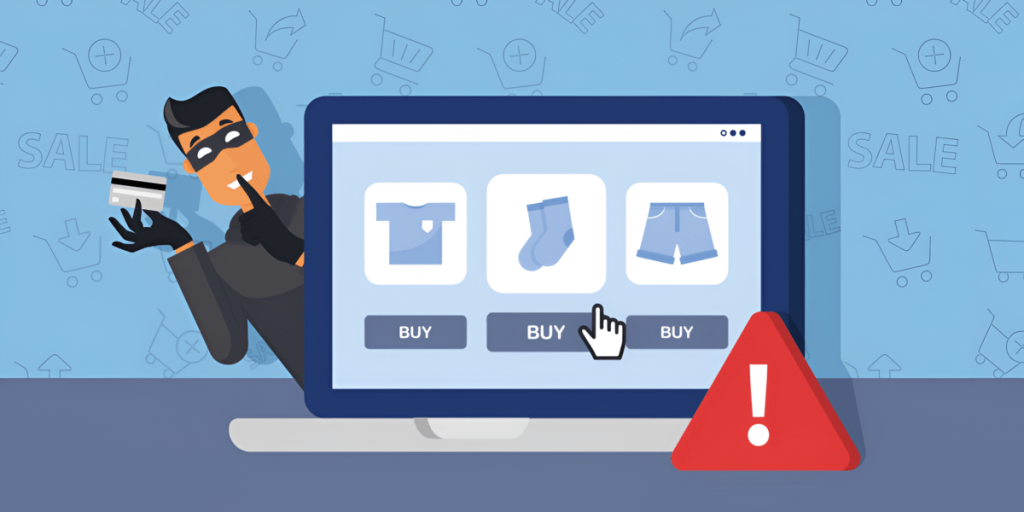Amazon refund scams have become a significant issue as online shopping continues to grow. With Amazon processing billions of transactions annually, scammers have found ways to exploit the platform’s refund processes. This article outlines the different types of refund scams, how to identify them, preventive measures, and the importance of professional chargeback prevention.
Introduction to Amazon Refund Scams
Amazon refund scams are increasingly common as online shopping expands. In 2023, e-commerce sales in the U.S. surpassed $1 trillion, with Amazon accounting for nearly 40% of that. This vast transaction volume makes Amazon a prime target for scammers.
The Federal Trade Commission (FTC) reported losses of over $5.8 billion due to online fraud in 2022, with a significant share involving scams on platforms like Amazon. These scams affect both consumers and sellers, ranging from phishing attempts to fraudulent refund requests.
Types of Amazon Refund Scams
1. Phishing Scams
Phishing involves scammers sending emails that mimic Amazon’s communications, asking recipients to click on a link to resolve a refund issue. These links lead to fake websites designed to steal login credentials.
- Fact: Phishing attacks surged by 29% in 2023, with e-commerce platforms as top targets.
2. Fake Refund Requests
Scammers target Amazon sellers by claiming issues with a purchase and requesting a refund. This exploits Amazon’s customer-friendly refund policies.
- Fact: Amazon processed over $7.2 billion in refunds in 2022.
3. Gift Card Scams
Scammers offer discounted Amazon gift cards in exchange for upfront payments, but the cards are never delivered.
- Fact: Gift card fraud accounted for 20% of all fraud cases in 2023.
4. Social Engineering Tactics
Scammers manipulate victims into providing personal data by posing as Amazon representatives.
- Fact: Social engineering attacks are expected to cause global losses exceeding $6 trillion annually by 2025.
5. Fake Review Scams
Scammers post fake negative reviews to force sellers into issuing refunds or pay individuals to leave fake positive reviews on fraudulent products.
- Fact: The FTC fined a company $12.8 million in 2022 for paying for fake reviews.

Identifying Amazon Refund Scams
Recognizing the signs of potential scams is essential:
- Unsolicited Communications: Unexpected emails or calls from “Amazon.”
- Unfamiliar Charges or Refunds: Transactions or refunds you don’t recognize.
- Requests for Sensitive Information: Amazon never asks for passwords or payment information via email or phone.
Table 1: Common Signs of Amazon Refund Scams
| Sign | Description |
|---|---|
| Unsolicited Communication | Unexpected emails or calls from “Amazon.” |
| Unfamiliar Charges/Refunds | Transactions or refunds you don’t recognize. |
| Requests for Sensitive Information | Scammers asking for your password or credit card details. |
| Suspicious Links | Emails containing links that do not lead to the official Amazon site. |
Preventive Measures for Consumers
1. Verify Communications
Always verify the legitimacy of any communication claiming to be from Amazon. Check the sender’s email address for slight variations that could indicate a phishing attempt.
- Fact: 90% of successful cyberattacks start with phishing emails.
2. Enable Two-Factor Authentication
Add an extra layer of security to your Amazon account by enabling two-factor authentication (2FA). This prevents unauthorized access even if your password is compromised.
- Fact: 2FA can block 99.9% of automated attacks.
3. Monitor Account Activity
Regularly check your Amazon account for unusual activity. Report any unfamiliar transactions or refunds immediately.
4. Use Chargeback Prevention Services
For sellers, chargeback prevention services can reduce the risk of refund scams. Merchanto.org, an official partner of VISA and MasterCard, offers solutions to help protect your business from fraudulent refund claims. Learn more here.
Table 2: Preventive Measures for Consumers
| Measure | Benefit |
|---|---|
| Verify Communications | Helps avoid phishing scams. |
| Enable Two-Factor Authentication | Prevents unauthorized access to your account. |
| Monitor Account Activity | Detects fraudulent transactions early. |
| Use Chargeback Prevention Services | Reduces risk of fraudulent refund claims for sellers. |

Amazon’s Measures Against Refund Scams
Amazon has implemented several measures to protect users from refund scams:
1. Two-Factor Authentication
Amazon encourages users to enable two-factor authentication for added security.
2. Machine Learning and AI
Amazon uses machine learning to detect and prevent fraudulent activities by analyzing transaction patterns and flagging suspicious behavior.
3. Project Zero
Project Zero allows brands to remove counterfeit products directly from Amazon’s marketplace, significantly reducing scams involving counterfeit products and fraudulent refunds.
- Fact: Project Zero has helped remove over 10 million counterfeit listings.
4. Seller Protection Policies
Amazon provides seller protection policies to help identify and avoid refund scams.
- Fact: Amazon’s A-to-Z Guarantee processed over 1.7 million claims in 2022.
Table 3: Amazon’s Anti-Scam Measures
| Measure | Description |
|---|---|
| Two-Factor Authentication | Extra security layer for accounts. |
| Machine Learning and AI | Automated systems to detect fraudulent activity. |
| Project Zero | Allows brands to remove counterfeit listings directly. |
| Seller Protection Policies | Guidelines and protections for sellers against refund scams. |
Steps to Take If You’ve Been Scammed
If you suspect you’ve fallen victim to an Amazon refund scam, take immediate action:
1. Report to Amazon
Report suspicious activity to Amazon through their official customer support channels.
2. Secure Your Accounts
Change your passwords and enable two-factor authentication.
3. Notify Your Bank or Credit Card Company
Inform your bank or credit card issuer to block unauthorized transactions.
4. Document Everything
Keep records of all communications, transactions, and suspicious activities. This documentation can be crucial in resolving disputes.
Conclusion
Amazon refund scams are a growing problem, but with the right knowledge and preventive measures, both consumers and sellers can protect themselves. By staying vigilant, using secure practices, and partnering with experts you can significantly reduce the risk of falling victim to these scams.
This article outlines how to protect yourself and your business from refund scams, emphasizing the importance of security measures and professional support. Following these steps can help you avoid becoming a victim in the ever-evolving landscape of online fraud.



